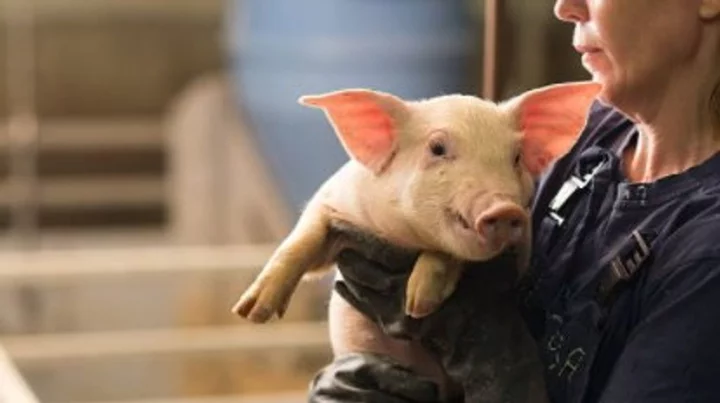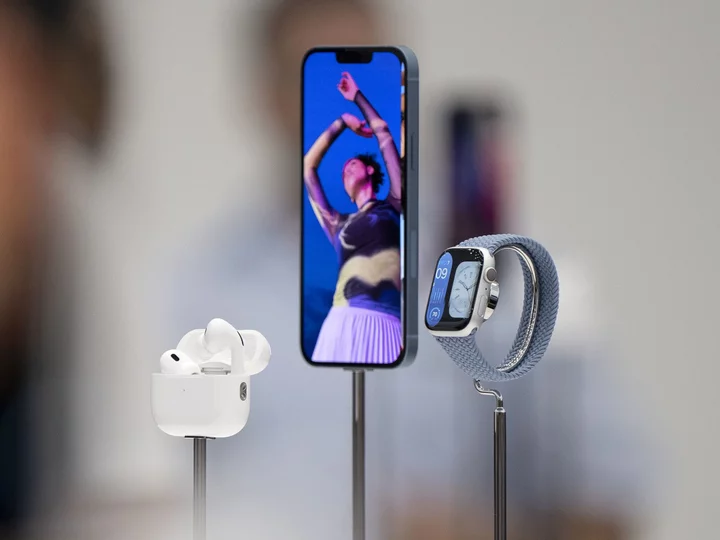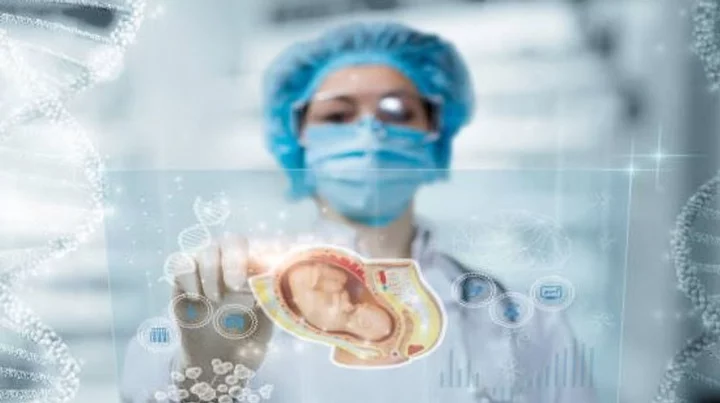
Why was Only Up removed from Steam?
The viral gaming hit Only Up has been surprisingly removed from gaming platform Steam with the creator of the title citing "stress" as the reason. Only Up became a big hit with gamers on various streaming platforms earlier this year with players attempting to complete the seemingly easily but hard-to-master platformer which involved a character scaling various objects higher and higher into the sky. However, the game has now been pulled from Steam's storefront so it's creator who goes by the alias of SCKR Games can focus on their next title, which according to IGN has a codename of Kilth. In a statement, SCKR Games said that Only Up is "a game I did for creativity, to test myself, and where I made a lot of mistakes." They added: "The game has kept me under a lot of stress all these months. Now I want to put the game behind me." "What I need now is peace of mind and healing. I plan to take a pause, and continue my education in game design and further with new experience and knowledge to direct my energies to my next game with the working title ‘Kith’ — it will be a new experience and a new concept with realism, a completely different genre and setting, and the emphasis is on cinematography. “This time I hope the project will be created by a small team. This is a challenging project on which I want to significantly improve my skills in game design.” The game had been removed from Steam back in June and later returned in July after copyrighted assets from another developer managed to get into the game but was soon resolved. It's unknown whether the game will return to Steam at a later date but its page remains available on the website although it cannot be purchased. Sign up for our free Indy100 weekly newsletter Have your say in our news democracy. Click the upvote icon at the top of the page to help raise this article through the indy100 rankings.
1970-01-01 08:00

The Mesh Grating on Your Microwave Is Actually an Important Safety Feature
To block microwave radiation, all you need is a simple screen.
1970-01-01 08:00

CFTC Focuses on DeFi Platforms in Latest US Crypto Crackdown
The US Commodity Futures Trading Commission brought enforcement actions against three decentralized finance firms and signaled that more
1970-01-01 08:00

Apple could be about to make the biggest change to the iPhone in 11 years
Apple is set to unveil the iPhone 15 in just a few days, and it's widely expected to come with a significant change.
1970-01-01 08:00

EV batteries will have to be 50% lighter in future, Stellantis tech chief says
MILAN Carmaker Stellantis aims to develop lighter electric vehicle batteries, cutting weights in half to improve sustainability, the
1970-01-01 08:00

China's Huawei launches Mate 60 Pro+ smartphone for presale
BEIJING China's Huawei Technologies on Friday started presales for its Mate 60 Pro+ smartphone, adding a new version
1970-01-01 08:00

iOS update: iPhone users urged to install new software immediately after powerful security hole found
iPhone users have been urged to download a new update immediately. The update was pushed out by Apple to iPhones and iPads after a major security vulnerability was found in the devices. Patching up that hole with the new software update should keep those devices safe. But without it, attackers could break into an iPhone and spy on its user. The security issue was found by researchers at the University of Toronto’s Citizen Lab. They said the problem was being “actively exploited” by hackers, and that all users should update immediately. They were doing so by delivering commercial software called Pegasus, which is made and sold by Israeli company the NSO Group. That software is expensive and targeted, and has primarily been used on specific activists, journalists and politcians, who are likely to know if they are at particular risk of an attack. The latest attack was used on the iPhone of a member of staff at a US civil society organisation with international offices, Citizen Lab said. It named the new exploit BLASTPASS and said that it did not even require users to click anything on their device. The NSO Group and Apple have in recent years been engaged in a long-running fight to find and fix security flaws that could allow for the delivery of that software. Recent iPhone updates brought a new “Lockdown Mode” that places extra restrictions on the device in an attempt to close up potential security flaws. That includes not downloading images that could include spyware, for instance – which is how attackers deliver the hack in this most recent scare. Downloading the new update is simple. It is done through the Settings app on iPhones and iPads, by clicking the “general” and then “software update” options – that will check for any new updates, and offer the option to download it. Phones may eventually automatically install the new operating system, which could mean that no download shows up in that screen. Users can check if they have already updated to the new, patched operating system by clicking the “about” option in the general settings, and looking whether they have the newest iOS 16.6.1. Similar updates are available for Macs and Apple Watches, and are installed in much the same way. Citizen Lab also advised that anyone “who may face increased risk because of who they are or what they do” should switch on Lockdown Mode. Apple confirmed that would block the new attack, researchers said. Read More Apple is dropping leather from iPhone cases and Watch bands, report claims Apple is about to make a huge change to the iPhone that it never wanted to do Here’s when you will actually be able to get the new iPhone
1970-01-01 08:00

EXPLAINER-What is in Huawei's new smartphone challenger to Apple?
By Yelin Mo and Brenda Goh BEIJING/SHANGHAI A new series of smartphones launched by China's Huawei Technologies has
1970-01-01 08:00

Scientists grow human kidneys inside a pig for the first time
Scientists have grown human kidneys in pigs, for the very first time. Researchers at the Guangzhou Institutes of Biomedicine and Health, Chinese Academy of Sciences and Wuyi University created human-pig chimeric embryos containing a combination of human and pig cells. When they transferred into 13 surrogate pig mothers, they developed kidneys that contained mostly human cells at a rate of 50 to 60 per cent, giving hope for potential transplants in the future. “Rat organs have been produced in mice, and mouse organs have been produced in rats, but previous attempts to grow human organs in pigs have not succeeded,” said the senior author Liangxue Lai. “Our approach improves the integration of human cells into recipient tissues and allows us to grow human organs in pigs.” The kidneys were not entirely human as they included vasculature and nerves made mostly from pig cells, meaning they could not be used for transplantation in their current form, but it is still a pretty impressive step. And apart from the kidneys, the embryos were dominated by pig cells, with very few human cells in the brain or central nervous system. Making brains using human and pig cells is very controversial for ethical reasons, so there are tight regulations for this kind of research. Meanwhile, pig cells tend to outcompete human cells during development, so previous experiments have created embryos that are almost entirely pig. The latest work, published in Cell Stem Cell, overcame this by genetically engineering a single-cell pig embryo so that it lacked two genes needed for kidney development. This created a gap within the embryo that could be filled by human cells. “We found that if you create a niche in the pig embryo, then the human cells naturally go into these spaces,” said Prof Zhen Dai of Guangzhou Institutes of Biomedicine and Health, another senior author. The scientists said that being able to incubate a fully human kidney inside a pig would be likely to take many years. “We would probably need to engineer the pigs in a much more complex way and that also brings some additional challenges,” said Miguel Esteban, also of the Guangzhou institute and a senior author. A central challenge would be to allow human nerves and vasculature to develop within the target organ without nerve cells developing in the central nervous system that could lead to a humanised brain. “Even theoretically it’s not clear how you’d do that,” said Ilic. Sign up to our free Indy100 weekly newsletter Have your say in our news democracy. Click the upvote icon at the top of the page to help raise this article through the indy100 rankings.
1970-01-01 08:00

PetroChina buys EV charging firm Potevio New Energy
PetroChina has acquired 100% of electric vehicle (EV) charging firm Potevio New Energy Co Ltd in the latest
1970-01-01 08:00

Everything Apple Plans to Show on Sept. 12: iPhone 15, Watches, AirPods
Apple Inc.’s most important new product unveiling of the year gets underway on Tuesday, when the company will
1970-01-01 08:00

Human embryo created without using sperm or eggs
Scientists in Israel have created a model of a human embryo from stem cells, without using sperm, eggs or a womb. A team at Israel's Weizmann Institute of Science made the model, which resembles an embryo at day 14, when it acquires internal structures but before it lays down the foundations for body organs, and the work was published in the journal Nature. But the scientists involved said it would take a long time yet to create an embryo from scratch. Team leader Jacob Hanna said the team took stem cells derived from adult human skin cells, as well as others cultured in the lab, then reverted the cells to an early state.They then manipulated them to make a model of an embryo, rather than an actual or synthetic one. "The question is, when does an embryo model become considered an embryo? When that happens, we know the regulations. At the moment we are really, really far off from that point," Hanna said. However, they said the work could open the door to new ways to test the effect of drugs on pregnancies, better understand miscarriages and genetic diseases, and maybe grow transplant tissues and organs. "They are not identical. There are differences from human embryos, but still, this is the first time, if you open an atlas or a textbook, you can say - yeah I can really see the similarity between them," said Hanna. "In about 1 percent of the aggregates we can see that the cells start differentiating correctly, migrating and sorting themselves into the correct structure, and the farthest we could get is day 14 in human embryo development," he said. Their next goal, Hanna said, is to advance to day 21 and also reach a threshold of a 50 per cent success rate. Magdalena Żernicka-Goetz, a professor of development and stem cells at the University of Cambridge, said the study joins six other similar human embryo-like models published from teams around the world this year, including from her lab. "None of these models fully recapitulate natural human development but each adds to ways in which many aspects of human development can now be studied experimentally," she said. Sign up to our free Indy100 weekly newsletter Have your say in our news democracy. Click the upvote icon at the top of the page to help raise this article through the indy100 rankings.
1970-01-01 08:00
